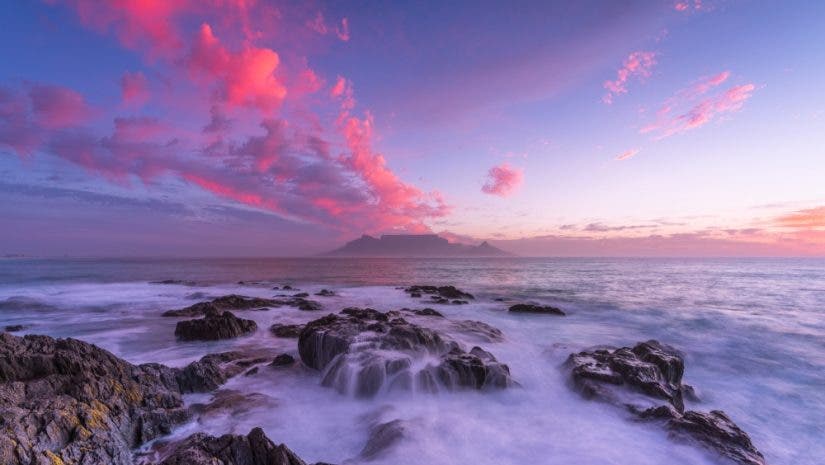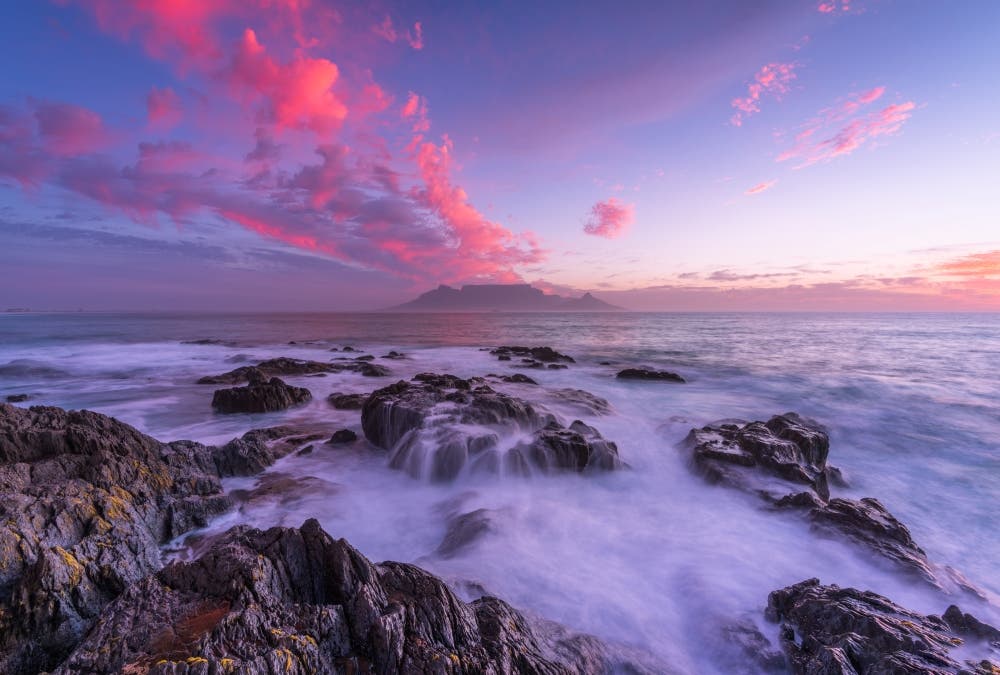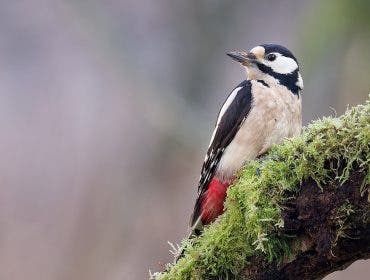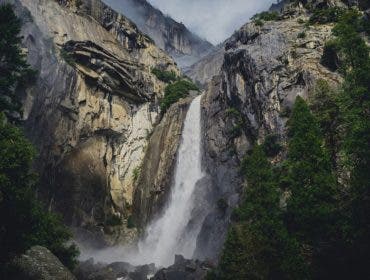In the trendy coastal suburb of Blouberg in Cape Town, a quiet corner offers dazzling views of the world-renowned Table Mountain, a natural wonder. Walking a few steps down the stairs from the parking brings you to a beach that has bred many talented photographers in the local community. Photographers flock there at sunset, conduct workshops, and bring visiting photographers to get “that wide-angle shot” of the mountain with a kaleidoscope of clouds looming over it and crashing waves in the foreground.
Although densely populated, the foothills of Table Mountain appear deceptively empty from this side of the bay, offering a glimpse of times gone by. The iconic view that highlights the mountain’s plateaued tabletop is the official logo of and synonymous with the city, many businesses, magazine cover pages, and the wallpapers of many offices and homes here and abroad. This over-photographed angle with different compositional styles and colors doesn’t prevent the local photographers from shooting it yet again. If not for the photo, they come here regularly as a hangout to soak in the sunset and enjoy coffee.
Landscape photography destinations become famous because they offer classic sights everyone wants to include on their bucket list. Some argue that photographers should avoid oversubscribed locations, but others make a strong case in their favour. There are advantages, especially for budding photographers, that allow them to grow if they consciously approach shooting at these locations with several aspects in mind.
Learning from the best
When you encounter breathtaking photographs of classic locations, let them take you on a photographic journey:
Composition
Delve into the photographers’ composition choices and note included elements, such as the foreground, middle ground, and background. This will aid in determining your lens choice, such as wide-angle or telephoto.
Camera settings
Try to gauge an approximate idea of the camera settings they might have used.
Does the photo possess a deep or shallow depth of field? This will give you insight into the aperture value to select.
Has a long exposure been employed? This will help you learn the concepts surrounding shutter speed.
Photography Techniques
Explore and discuss landscape photography techniques with your fellow photographers. Here are a few examples:
Is the camera angle directed down at an element in the foreground or pointing straight ahead? This will also assist you with your tripod positioning—whether high or low.
How would you capture a photo like that? Would you employ ND filters, a polariser, a graduated ND filter, or a combination thereof or use exposure compensation? Or consider focus-stacking for a photo of this kind? Do you think such a photograph be a composite or a single shot?
Post Processing
Editing is a crucial yet often overlooked aspect of landscape photography. Many photographers rush to share their work on social media, neglecting this critical process. You can significantly enhance your images by dedicating time to editing and turning ordinary photos into exceptional ones. Consider how the different elements of the photograph must have been treated and enhanced, what focal points draw attention, and the overall mood – whether it’s dreamy, monochrome, high contrast, vibrant, or subdued. Embracing the editing process can lead to remarkable improvements in your landscape photography skills.
Planning
This process includes selecting the optimal season to visit a location, identifying the specific time of day that showcases the scene at its best, knowing the directions for sunrise and sunset, and determining how to access that location, factoring in travel and traffic times.
Consider using these insights to elevate your photography and spark your own creativity. Imitation is also part of the learning process; all humans do this, so do not feel bad about it. While visiting the exact location can be beneficial, aim to enhance your existing portfolio by being unique. For example, if most photographers have captured wide-angle shots, consider using a telephoto lens to focus on a specific scene detail. If previous images were mainly taken at dusk or dawn, why not experiment with night photography to capture a different ambience?
These photos from the largest quiver tree forest in the Southern Hemisphere are special to me because the professionals in my circle of local photographers have only captured this area during the Milky Way season with the night skies. I decided to visit in the spring season and witnessed the aloes blooming with long yellow stems that none of my peers had photographed before, especially at sunset.

Moreover, think about changing your position to uncover distinct viewpoints others might not have captured. Take a moment to explore your surroundings and notice what else is in the area. Utilising resources such as Google Maps can help you scout for new angles. Embracing these techniques is crucial for your development as a photographer, so continue challenging your creative limits!
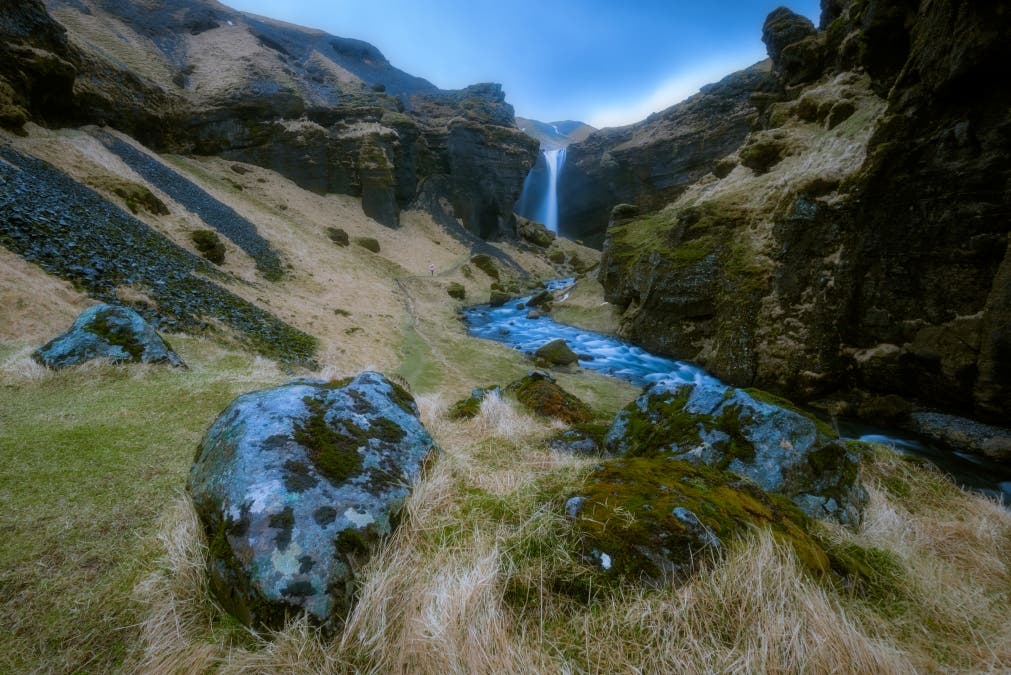
Off Centre: Discovering Hidden Gems
While standing in front of a renowned landmark can be exhilarating, it may also evoke a sense of sameness if everyone captures the same shots from identical angles. Such locations should not be the sole focus of your photographic journey. Instead, they ought to act as a catalyst for discovering your own place and making your own iconic spots. This will assist you in developing a distinctive style that sets you apart from others, bringing a fresh narrative that encourages others to view the world differently. One should experiment with techniques, styles, and compositions without the pressure of competing against others. By creating your own vision and sharing your personal take, you can cultivate a portfolio that reflects not merely the thrill of famous landmarks with an imitative quality but also the beauty found in the unexplored and the ordinary.
I will save the story of this lonely tree below for another day, but discovering the sentinel in the middle of the Northern Cape desert, imagining it beneath the night stars, and travelling a few hundred miles each time over the years to photograph brought me immense joy and unexpected friendships, a means of income, as I sold many of its prints and have conducted workshops here.
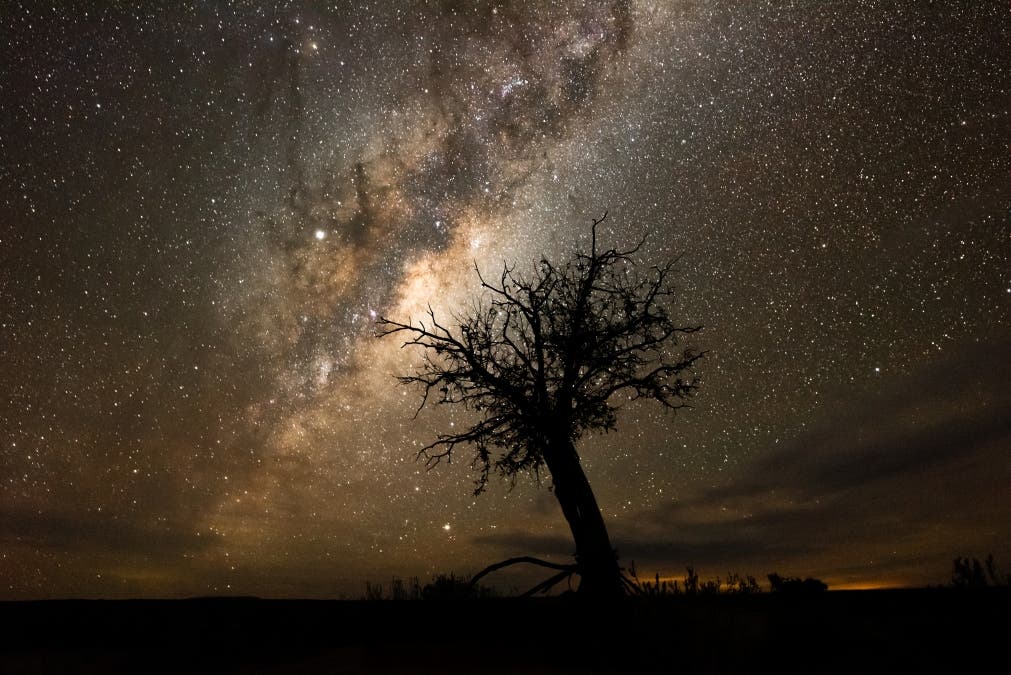
Treasures at Risk: A Message of Preservation
Photos are a record. A series of photos over a passage of time offers a curious insight into the changes that time wreaks. Photographers are in a distinct position to highlight the vulnerability of these landscapes because of climate change and human activities. Through the documentation of our lenses, these visual narratives remind us that the landscapes we cherish may not be preserved for future generations without responsible action. These may be useful for objective evaluation and intervention for preservation. There are many examples of how photos of deforestation and the impacts of human traffic have resulted in actions taken with corrective measures.
Final Thoughts
There are obvious drawbacks to shooting at famous sites, such as overcrowding, overphotography, litter, and public disregard of boundaries, especially by photographers. However, if you can access these remarkable places, embrace the opportunity to capture them in your style. Doing so allows you to develop your personal experience, preserve memories, and embark on an adventure while delivering a positive message to others. Remember, there is nothing wrong with having your own iconic shot!
